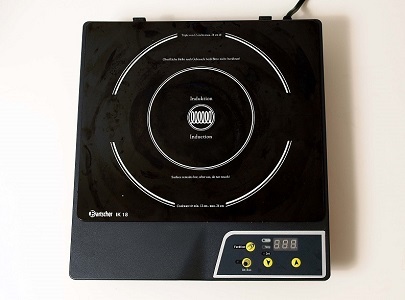Induction hobs
In induction hobs, heat for cooking is generated directly at the bottom of the pot and not, as with conventional hobs, conducted through the cooking zone to the pot. This is done with the aid of coils located beneath each cooking zone of the induction hob. Through those coils an alternating current (20 - 100 kHz) is applied that generates a magnetic field. The magnetic field passes unhintered through the ceramic cover of the hob and the bottom of the pot on the cooking zone. The magnetic field creates a circular current in the electrically conductive bottom of the pot (eddy current), which heats up the content of the pot evenly. This principle is called induction. The pots are made of ferromagnetic materials. In these materials the magnetic field induces additional heat by internal friction. Typical measurement values for induction hobs can be found in the database of exposure sources.

photo: Pic p ter, license: CC BY-SA 3.0, via Wikimedia Commons